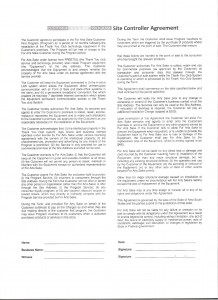Overall newsagency sales decline. 61% of participating newsagencies reported a decline in revenue. Of those reporting a decline, the average was 7%. Of those reporting growth, the average was 4%.
Traffic. Customer traffic was down for 58% of newsagents recording an average decline of 1.8% in the number of transactions.
Basket depth. 54% of newsagents reported a decrease in basket size (items in the basket) with an average increase was 2.5%.
Basket value. 53% of newsagents reported an increase in basket value – with an average of 3%. While newsagents are selling fewer items, they are selling more expensive items.
Product mix. Traditional newsagency lines – newspapers and magazines – suffered the most. This is concerning since these two product categories have been important traffic generators and have been central to the habit based nature of newsagency traffic.
Discounting. There has been a decline in discounting by newsagents. In 2011, more than 70% of newsagents notably discounted. In 2012, this figure was down to 30%.
There is good news in this benchmark study for some newsagents. Those who are working on their business, expanding product range, chasing margin and chasing new traffic are more likely to see basket value (especially) increase.
This newsagency sales benchmark study is based on an analysis of sales basket data from more than 150 newsagencies – city and country, shopping centre and high street, banner group and independent. I have looked at basket data for October through December 2012 and compared this to the same period a year earlier from the same businesses.
Benchmark results by key departments:
1. Magazines. 86% of newsagents reported an average decline (in units) of magazine sales of 7.3%.
Breaking this out some newsagents reported declines approaching 20% while others were in the low single digits. This is one of the worst trading quarters for magazines in recent history of this benchmark study series.
Weekly magazines and many high volume monthlies reported the most significant decline. Categories where newsagents face little or no competition for a reasonable part of the range reported growth.
We are facing a moment of truth in this data:
Newsagents who want to stem the decline of magazine sales need to work harder on the department.
Magazine distributors who want newsagents to maintain their specialisation in magazines need to offer a more equitable magazine supply model. Most newsagents I have spoken with report no decline in the cost of stock to match the decline in sales. If this continues, many newsagents will retreat from magazines altogether.
2. Newspapers. 73% of newsagents reported an average decline of 5% in newspaper sales. International newspapers remain relatively strong as do local titles in rural and regional situations. Targeted news product fares better.
3. Greeting cards. 64% of newsagents reported an average 3.5% revenue growth. Of the rest reporting a decline, the average was 8% with some as high as 25% – this is a serious problem for newsagents with declining card sales.
4. Stationery. 61% of newsagents reported an average decline of 6%. But like any average it is not accurate in that the worst decline was 32% and the best 1%. This is concerning.
5. Ink. 46% of stores participating in the study separate ink sales data allowing further analysis. 59% of these stores reported ink sales growth of 5%.
6. Gifts. 75% of the newsagents in the study have a separate gift department. Of these, 82% reported year on year growth. In 15% of newsagencies with a gift department, gifts accounted for more revenue than greeting cards.
7. Calendars. 77% of newsagencies with a separate calendar department reported growth of 9% on average. This is excellent for a 60% margin department.
8. Tobacco. 70% of stores with tobacco products reported a decline.
9. Confectionery. 58% of store reported an average decline of 2%.
10. Toys. More newsagents are in toys this year than last. 95% of stores with a toy department reported growth.
Shopping centre newsagencies are vulnerable with traffic from core lines falling significantly. Landlords will need to demonstrate flexibility to help these businesses navigate the retail and print media disruption at the moment.
Newsagencies continue to be good businesses to own. They respond to attention. There is good evidence of this in individual store performance data I have seen.
The best type of newsagency to own today continues to be the one where you have the most control over what you sell. This is more likely to be in a high street and / or regional situation. That said, smart newsagents are taking back more control over what they sell and the price they sell these goods for.
We create our own luck, now more than ever.
I appreciate the time given by the newsagents who shared the sales data for this study.
ABOUT THIS STUDY
This study is based on sales data collected from more than 150 newsagents across Australia. These newsagents represent five banner groups as well as independent operators.
The only common thread among the newsagencies is that they all use the Tower Systems newsagency software. Around 60% of newsagents with a computer system use Tower Systems.
I have eliminated data from businesses where I knew that unique local factors impacted on the sales data.


